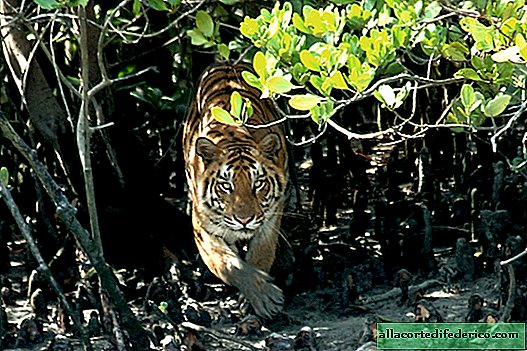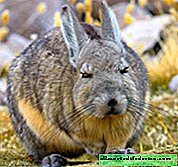Sundarban is the grandest mangrove on the planet that protects Calcutta
In the Ganges delta, on the coast of the Bay of Bengal, the largest mangrove forest on Earth is located. This forest even has its own name - Sundarban. The untouched wild jungle miraculously survived in a densely populated region on the border of India and Bangladesh and was taken under the protection of UNESCO. Amazing terrain is inhabited by thousands of wild deer, hundreds of Bengal tigers and many other animals that cannot live without this amazing mangrove forest.

Mangroves are unique ecosystems that are located in the contact zone of tropical land regions with the ocean. Often their location coincides with river deltas. This particular forest world lives by the laws of the ocean, being filled with water at high tide and turning into land at low tide. Not everyone can adapt to this rhythm of life, therefore the flora and fauna of the mangroves are in many ways unique.

Unfortunately, mangroves, like any other tropical forests of our planet, feel a strong anthropogenic impact. Chemical pollution of river and ocean waters, cutting down mangroves for fuel, obtaining valuable wood and clearing the area, increasing water levels in the oceans leads to the fact that the area of mangroves is everywhere reduced. Amid these events, the huge mangrove forest, which occupies about 1 million hectares, in the Ganges delta seems an incredible miracle.

This mangrove paradise is located within two states - India and Bangladesh. Indian, a large part of the forest, is called Sundarban National Park, and Bengal is simply called Sundarban. At the same time, both parts are classified as UNESCO World Heritage Sites and constitute a single protected area. Sundarban is not a single flooded space, but a bizarre combination of canals, islands and swamps.

Initially, the reason for the creation of the protected area was not so much the unique mangroves as the Bengal tiger - as its rarest and most valuable inhabitant. In order to protect this species, in 1973 a reserve was organized on the Indian part of Sundarbana, which later received the status of a biosphere. In addition to the rare and in need of special protection, the Bengal tiger, there are huge combed crocodiles, dolphins, deer, primates, an amazing variety of birds and other animals. The fact that these vast jungles are teeming with mosquitoes, snakes, tigers and crocodiles has a beneficial effect on their conservation. Both the local population and representatives of the British colonial administration preferred to bypass these places. Of course, from the point of view of tourism, the mangrove forests of Sundarbana are not the most attractive places, but they play a huge role in maintaining biodiversity and maintaining the ecological balance between the anthropogenic and natural landscapes of this densely populated region. Do not forget about the protective role of Sundarban. These vast forests are a defensive zone that saves the continental parts of the region, including the metropolis of Calcutta, from powerful tropical cyclones and tsunami waves.



























